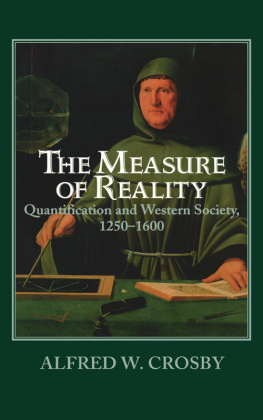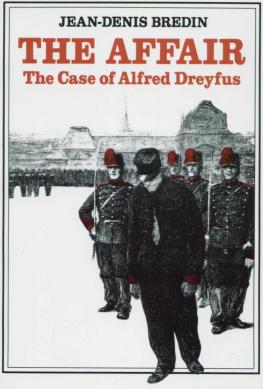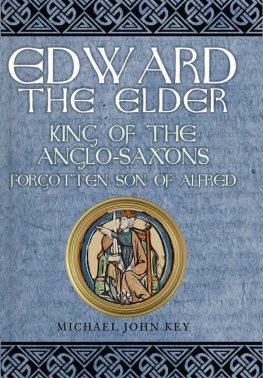Introduction: Background
and Sources
lfred is the most perfect character in history No other man on record has ever so thoroughly united all the virtues both of the ruler and of the private man. In no other man on record were so many virtues disfigured by so little alloy.
Edward Freeman, 1879
King Alfred the Great is the most famous and celebrated of all Anglo-Saxon kings. His statue stands at the heart of a number of southern English towns Wantage, where he was born over a thousand years ago; Winchester, where he was buried; Pewsey and Shaftesbury, where he also had strong personal connections. Other monuments to his memory can be enjoyed on a day out at Stowe Landscape Gardens, on the Stourhead estate in Wiltshire or at Athelney on the Somerset Levels. Alfred was headline news when the results of an examination of what might have been part of his skeleton were announced in Winchester. This was in January 2014, 1,115 years after his death. How has Alfreds reputation survived with such dramatic force when other powerful and high-achieving Anglo-Saxon kings have been all but forgotten? Why is he the only King of England to be known as the Great?
There are three main reasons for Alfreds fame: (1) his successful defence of his kingdom against the Vikings; (2) the relatively large number of sources which survive from his reign; and (3) the desire in later centuries to find Anglo-Saxon origins for the English constitution, Church, empire and character. These three aspects coalesce so that his very real achievements have become part of a myth. It is a process that began in his lifetime and reached its apogee in the millenary celebrations of his death in 1901.
Alfred was the right person in the right place at the right time. Early in his reign he very nearly succumbed, like so many of his contemporaries, to the onslaught of the Vikings, but somehow he managed to hold out. By the time of his second campaign against the Vikings, between 892 and 896, his kingdom of Wessex was better prepared to defend itself. The military changes Alfred made saved his land and his people, and secured his reputation as a war leader. Alfred was able to leave the throne far more secure than he found it, so that his son and grandsons could in due course capitalise on his achievements to become kings of all England.
Alfred lived at the time of what is now known as the Carolingian Renaissance, a period of heightened interest in learning and the written word in western Europe. Due to this, his reign is among the best recorded of the entire Anglo-Saxon period. Alfred seems to have taken a strong personal interest in the production of texts in the English language, something which marks him out from all of the other Anglo-Saxon warrior kings. He commissioned a series of translations into Old English of key Latin texts. He also had circulated, and may have commissioned, the Anglo-Saxon Chronicle , which recorded, in the native tongue, the main events of his and earlier periods, beginning with the invasion of Britain by Julius Caesar in 54 BC and rapidly moving on to the arrival of the Anglo-Saxons, including Alfreds supposed ancestors Cerdic and Cynric in the fifth century.
The Chronicle , as we have it, consists of various manuscript versions of an original compilation made in Alfreds reign. Topics covered are limited and seem to reflect his known interests: the accessions and deaths of kings, visits by West Saxons to Rome and, above all, battles. Very unusually among contemporary writing, there is relatively little on ecclesiastical matters and nothing to associate the work with a particular religious community. Its brief and laconic entries are deceptively simple. This was a collection of material carefully chosen to show Alfred in a favourable light.
The first stage of compilation was completed sometime between 890 and 892, when Alfred was about 40 years of age and had been on the throne for some two decades. It was probably circulated when it was apparent that another major round of Viking wars was starting. The entries for this second phase of war are considerably more detailed, perhaps made soon after they took place, and give us much information about ninth-century military manoeuvres. These entries may have been distributed as a top-up to those places which had received a copy of the main Chronicle compilation.
Most crucial of all for Alfreds subsequent reputation was the Latin biography written by one of his court advisers, the Welsh scholar monk Asser, who eventually became one of the bishops of Wessex. The Life of Alfred , written in 893 while the king was still alive, is the only biography that survives for an Anglo-Saxon king and provides types of information about the man and his reign that we do not have for other pre-Norman rulers. A translation of the Anglo-Saxon Chronicle forms the main structure of the narrative, together with some additional information which may have come from the recollections of the king himself or other war veterans at his court. On to this framework Asser pastes other information and vignettes in rough chronological sequence. There are scenes from Alfreds childhood, his interest in learning, the illnesses from which he suffered, his religious attitudes and his concerns with the operation of law, together with various observations about his position as king. It seems to offer insight into the kings innermost thoughts. But caution is necessary. Assers work is far from an objective critique of the king and his reign. It is clearly framed in terms of contemporary ideals of kingship, based on classical, biblical and Frankish prototypes, to which his Alfred is made to conform. The Life has to be seen alongside the work of other court scholars who helped make the translations of Latin works into Old English during Alfreds reign. We have a relatively clear idea of what this coterie of churchmen considered to be the qualities of an ideal ruler. There is a strong influence from the land of Francia, across the Channel, from works produced at the courts of the great kings Charlemagne (Charles the Great, d. 814), his son Louis the Pious (d. 840) and grandsons Lothair (d. 855), Louis the German (d. 876) and Charles the Bald (d. 877) the last was Alfreds step-grandfather.
How far Alfred himself subscribed to their interpretation of kingship is a crucial matter on which it is possible to take divergent views. Assers biography was never widely circulated under the kings imprimatur in the way that the Anglo-Saxon Chronicle seems to have been. This could be an indication that Alfred did not fully condone its contents, that it was not how he wanted posterity to remember him. The work may never even have been completed. It lacks a conclusion, and there are evident minor errors and places where it appears that more information was to be inserted at some future date. It is dedicated to Alfred, but in it Asser often seems to be addressing his fellow countrymen in Wales. One theory is that it was begun when Alfred needed to encourage the Welsh kingdoms into a political alliance, and abandoned when the diplomatic situation subsequently changed.
Although the Life was not widely circulated, it was known to later medieval historians such as William of Malmesbury (d. c . 1143) and Henry of Huntingdon (d. c . 1157), who wrote about the Anglo-Saxon past. They summarised what Asser had said, and they added in further information on Alfreds reign, some deriving from oral tradition and some of it mere inference. As Asser provided their template, a very positive portrait of the king was passed on to subsequent ages. When churchmen and politicians in later centuries wanted to discover Anglo-Saxon precedents for their own activities, it was Assers Life of King Alfred and its later accretions which came most conveniently to hand. Asser would have considered it a job well done when the Victorian historian Edward Freeman declared Alfred to have been the most perfect character in history.














